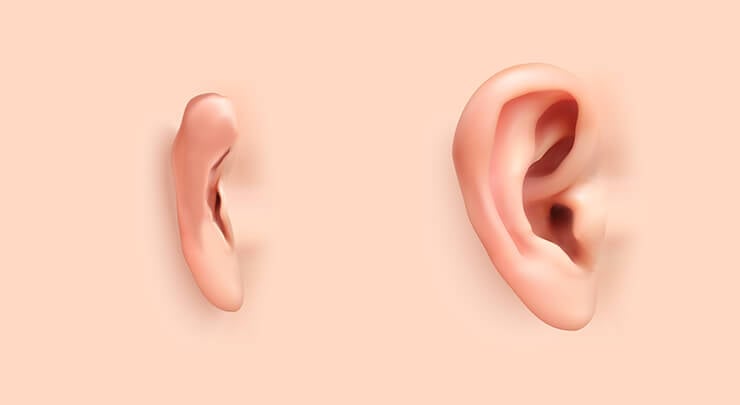
What would you attempt to do if you knew you could not fail?
– Unknown

What would you attempt to do if you knew you could not fail?
– Unknown
Microtia is a congenital deformity. Treatment options are available for those who dislike the appearance of microtia and wish to correct it.
or many, the term "microtia" is an unfamiliar one. To the parent whose child is born with this rare disorder, the little word can be quite disconcerting. Microtia, literally meaning "little ear," is a congenital disorder that results in an under- or malformed ear and is associated with conductive hearing loss of varying severity.

Simply put, microtia is a congenital deformity that results in a small, poorly formed external ear. If the external ear is entirely absent, then this is known as anotia. The malformation of the external ear can vary wildly; in some cases the ear lobe or hollow of the ear may partially form, with the rest of the ear missing. In other cases there may only be a small portion of ear tissue where it would normally grow. In the most extreme cases, called anotia, the external ear doesn't to grow at all. Microtia can present unilaterally (on one side only), or bilaterally affecting both ears). For reasons that we don't fully understand yet, microtia is usually unilateral, affecting the right ear more often than the left. Occurring only in about 0.76 to 2.35 per 10,000 births, this condition is exceptionally rare.
All children born with microtia share the most common complication associated with the malformation: reduced hearing. One of the defining characteristics of the disorder is aural atresia or aural stenosis. Aural atresia means that no external ear canal or drum has formed, while aural stenosis refers to a narrowing of the ear canal and a small ear drum. Either of these structural problems make it extremely difficult for sound to travel to the inner ear, resulting in a least some hearing loss.
In the vast majority of cases microtia is diagnosed by itself without any other abnormalities. However, in rare cases microtia can occur simultaneously with other malformations as part of a syndrome. These include:
Though medical science is diligently studying the condition, we still aren't sure what causes microtia. It is important for parents of children born with microtia to understand that it isn't their fault. Despite the fact that we're not sure how it happens, after years of research and study there is absolutely no evidence to suggest anything the mother does during pregnancy causes it. Even in cases where one or both parents were born with it themselves, it is not necessarily inherited by their children.
As researchers have worked tirelessly towards understanding microtia's causes, they have in turn discovered a great deal about the condition. The best way a parent can help their children is to learn more about microtia, how it effects hearing, and the available treatment options.
It is known that while in the womb, ears are formed in the area of the neck before they move upward to the head. When the supply of blood to the area is interrupted at any point, the ears may not form properly and microtia or anotia results.
global$galleries_array;Microtia presents in one of four grades:
To look 'normal' is the primary goal expressed by my patients.
– Dr. Leila Kasrai
Partially because of its rarity, microtia is almost never caught on prenatal ultrasounds. This, coupled with the varying ways it can present, has led to a few different treatment options.
The most basic treatment option is no treatment at all. If the deformity isn't severe, and isn't interfering with your child's social development, you may choose to forego treatment altogether. This course of action should be examined carefully, and only truly considered if your child is coping with their microtia well. Negative social interactions, like bullying, might play a role in this decision.
Another possible form of treatment is a prosthesis. Synthetic materials are always improving in quality and can offer some fairly convincing skin tones. That being said, even the best prosthesis can be spotted, and they usually have an unnatural feel to them. Additionally, prosthetics often require surgical pins for proper placement, and once you've chosen to go this route, you can't opt for surgical ear reconstruction later.
The final treatment option is surgical ear reconstruction. For this treatment there are two prevailing techniques:
Please note that I do not perform surgery on children under 7 years old. The minimum age is 7 years old.